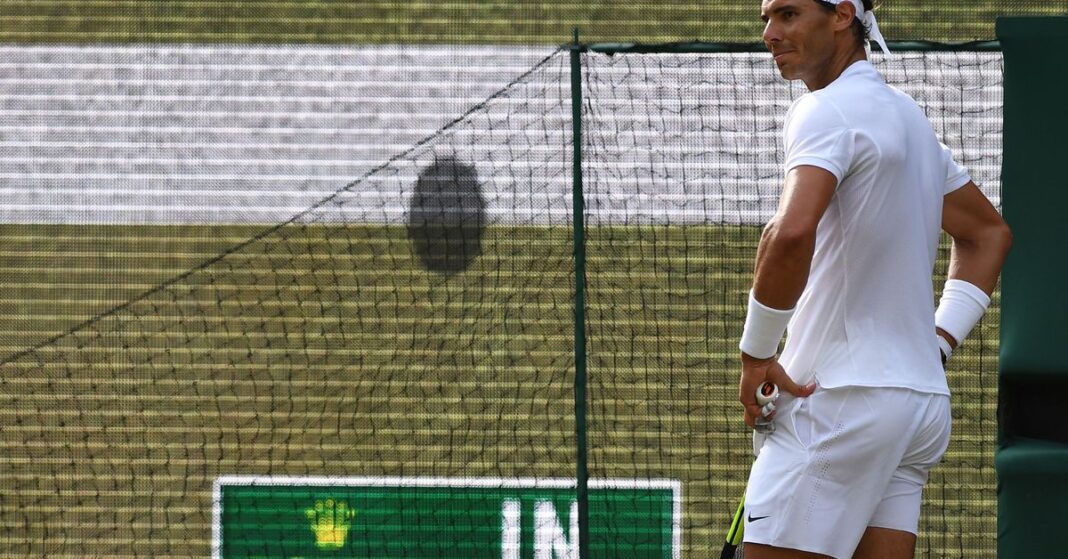The Wimbledon Championships, essentially the most prestigious {of professional} tennis occasions, declared it could not use human line judges at subsequent yr’s event. In 2025, the London occasion will use an digital line-calling system (ELC) as a substitute.
First reported in The Times of London, the announcement marks a radical change to a 147-year-old custom, albeit one which’s on pattern with the game’s broad shift towards technology-assisted officiating. In 2023, the Association of Tennis Professionals announced all of its occasions would transfer towards automating line calls, and two of the 4 Slams have already integrated it. With Wimbledon going with ELC, the final holdout is the French Open.
Previously, a courtroom was monitored by as many as 9 line judges, every tasked with figuring out if a ball is in or out of their assigned lane. Based on the identical The Occasions article, Wimbledon employs 300 judges overlaying over 600 matches through the two-week occasion. However the embrace of laptop techniques shouldn’t be reflective of a need to scale back employees (the automated system nonetheless requires lots of people in a sales space). As an alternative, ELC techniques are believed to enhance accuracy — a perception broadly held particularly among players not named Jelena Ostapenko.
Final month, I published a story about the history of electronic line calling in tennis, specializing in the most well-liked implementation, Hawk-Eye Dwell. The know-how, which makes use of a system of ten to 12 cameras across the courtroom, really determines the place a ball will land relying on its trajectory. Initially, Hawk-Eye was launched as a enjoyable accent for broadcasts to indicate line calls slightly than a steerage for officiating. However after an notorious 2004 US Open match between Serena Williams and Jennifer Capriati revealed plenty of clearly inaccurate calls — to a big TV viewers at dwelling, no much less — the organizing our bodies of tennis moved to deploy Hawk-Eye as a software that could possibly be utilized by gamers to problem line judges. Twenty years later, Hawk-Eye calling is so reliable that it’s automated on the US Open; gamers don’t even must ask for it now.
Charlotte Wilson/Offside/Offside by way of Getty Photographs
Throughout a match, ELC techniques seize large swaths of information: not simply the ball at 70 frames per second of each second of a match, but additionally the participant actions as properly. This offers lots of stats for broadcasters through the match, in addition to a wealth of knowledge again to the gamers to evaluate their efficiency after. However there’s maybe a much less anticipated, and extra profitable, use case as properly: promoting that knowledge to sports activities betting corporations.
There’s a complete pipeline of information and licenses that enables apps like DraftKings or FanDuel to derive betting odds from a ball- and player-tracking system, and it additionally permits organizations just like the Affiliation of Tennis Professionals to revenue from the booming sports activities betting business not directly. (Some stage of obfuscation is required — being profitable immediately from playing may compromise the integrity of the game.) In my reporting, I discovered that the Affiliation of Tennis Professionals makes as a lot cash from licensing ball and participant monitoring knowledge because it does promoting its broadcast rights. Wimbledon will doubtless make a fairly penny too, as soon as it strikes to an ELC system subsequent summer time.
As a spectator, I’ve personally began to overlook the times when Hawk-Eye was used as a problem system slightly than an automatic supply of officiating. If a participant felt assured {that a} line decide was improper, they may dispute it. The chair ump would summon Hawk-Eye, and thru a dramatic construct up — for the officers, the gamers, and the viewers — the placement of the ball could be revealed, and a name upheld or overturned. The outcome may change the course of a match. Personally, I discover it onerous to withstand such nice drama!
We nonetheless have types of this in different sports activities. Is something extra enjoyable than when an NFL coach drops a pink flag to contest whether or not a large receiver had management of the ball? However whereas the principles {of professional} soccer nonetheless have shockingly squishy ideas of what a catch is, issues are extra inflexible in tennis. A ball is both in or it’s out. And because the sport strikes towards a technological resolution to make its officiating selections, quickly line judges shall be out too.

